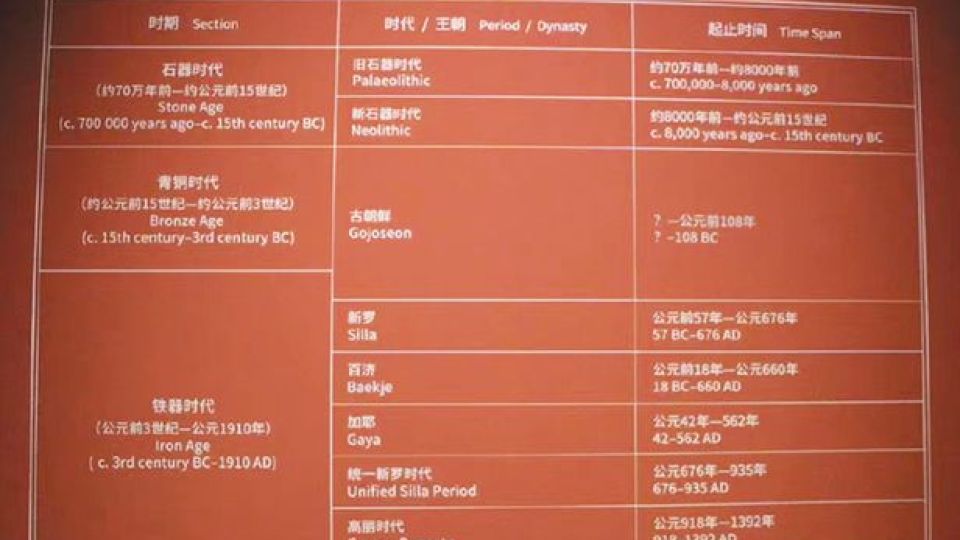September 16, 2022
SEOUL – Korea’s two ancient kingdoms of Goguryeo and Balhae are missing in a chronological table of ancient Korean history currently on display at a National Museum of China exhibition, but any correction seems unlikely.
The exhibition, titled “Auspicious Metals From the Orient: Ancient Bronzes of China, Korea and Japan,” is jointly organized by the national museums of the three countries to celebrate trilateral relationships and commemorate the 30th anniversary of diplomatic ties between South Korea and China.
The National Museum of Korea sent 15 relics to the National Museum of China for the exhibition, including the Bell of Cheonheungsa from the Goryeo Kingdom, a national treasure, and a Goryeo Kingdom bronze incense burner with silver-inlaid design.
The exhibition, which opened July 26 and runs through Oct. 9, centers on the theme of ancient bronze relics used in the three countries.
The table showed Gojoseon in the Bronze Age, and Silla, Baekje, Gaya, the Unified Kingdom of Silla, Goryeo and Joseon in the Iron Age, omitting Goguryeo and Balhae. The table showed the National Museum of Korea as its source.
According to the NMK, a complete chronology of Korean history was sent to the NMC on June 30. The NMK presumes that the museum in China deliberately edited the material provided.
On Tuesday, NMK head Yoon Sung-yong sent an official letter to the NMC demanding an apology and corrections to the table. An official at the NMK told The Korea Herald on Wednesday morning that they had just sent another letter as the NMC had not yet responded.
This incident is seen as the latest in China’s attempts to distort history. In 2002, China launched the “Northeast Project” through the Chinese Academy of Social Sciences and has since sought to incorporate Korea’s ancient kingdoms as part of northeastern China’s regional history. The project caused rows between South Korea and China to the point of jeopardizing bilateral ties.
According to the nongovernmental Voluntary Agency Network of Korea, China’s first-year middle school textbooks of national history describe Balhae as a “regime built by ethnic minorities in the northeast.”
“Similar incidents occurred in the past in China’s regional museums, but the fact that it occurred at the national museum has a very different meaning,” Kim Hyun-sook, a historian and chief researcher at the Northeast Asian History Foundation, told The Korea Herald on Wednesday.
Kim explained that museums and textbooks are closely interconnected in China, with both aimed at reaching China’s general public.
“Under Xi Jinping, China’s ‘One Belt, One Road’ initiative has not only solidified, but also expanded in its meaning. The purpose is to have the Chinese standard, including Chinese perspective of history and China-centric logic, infiltrate all levels of globalization, history, culture, politics and economy.”
Kim also criticized the Chinese government’s Northeast Project. “The Chinese government insists that academic issues are to be solely dealt with in the academia and should not have impact on partnerships between countries. This statement is akin to a perpetrator talking with a victim’s logic.”
Asked what might happen in the latest case, Kim replied that the chances of the Beijing museum making the requested corrections are slim to none at this point.
“As soon as a sign is hung at the national museum level, it is regarded as an official statement of the Chinese government. Changing the declared historical message equals losing face to the Chinese public, which is a disgrace to the regime.”


